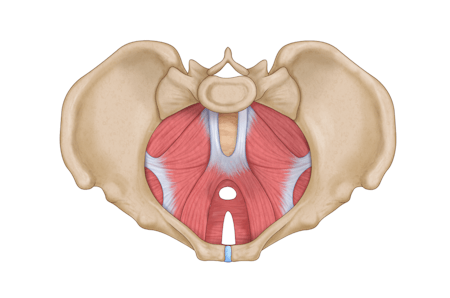IncontinencePregnancyUrinary Incontinence Pt. 2
DROP OR PUDDLE, FIX YOUR BLADDER TROUBLE
Take the Quiz!
- An internal vaginal exam is not needed in order to be taught how to properly perform a kegel.
FALSE. Health care providers should never prescribe kegels without first performing EACH of the following (as recommended by the Society of Obstetricians and Gynecologists of Canada in the 2008 clinical guidelines on the conservative management of urinary incontinence):
A) A thorough internal exam
B) Assessing the technique of the patient’s kegel
C) Assessing the strength of the pelvic floor by digital vaginal examination
Most healthcare professionals, YouTube sensations, and fitness instructors often teach women how to do kegels without doing an internal exam. This has resulted in very poor success rates, by times worsening of incontinence, and frustration for women. Many women then have the misconception that kegels did not work for them.
Assessing the pelvic floor without doing an internal exam is like a Doctor or a physiotherapist doing an exam of your neck when you are wearing a turtleneck sweater and scarf. It would be unacceptable to treat any other part of the body without first observing and touching the affected body part to assess for pain, redness, swelling, and strength in the muscles.
Pelvic Health Solutions, a pelvic floor physiotherapy company in Ontario says it best, “Internal palpation is an integral part of treating the pelvic floor and is the gold standard. Accept nothing less.”
2. Urinary incontinence improves on its own after giving birth
FALSE. Among those who reported urinary incontinence at 3 months postpartum, 76.4% continued to report it 12 years later.
Don’t put it off, get treatment now. With the exception of the first couple weeks postpartum, the incontinence does not tend to get better on its own.
3. It is cheaper to wear pads daily to cover up incontinence than it is to pay for pelvic floor physiotherapy.
Statistically, on average, it takes 5-8 sessions to improve or cure urinary incontinence. At $120.00 for an assessment and $90.00 a treatment, the total for pelvic floor physiotherapy is often around $750.00 or less. For most women, the majority of the cost for physiotherapy is reimbursed by their private insurance plans (Blue Cross, Johnson, Sun Life, Great West Life, etc.) Often insurance companies pay $500 of the $750, costing the average patient $250 at most for pelvic floor physiotherapy services (many require fewer than 8 appointments.) Even for those with severe urinary incontinence who have to pay the amount in full for physiotherapy out of pocket, it is still cheaper than the annual cost of incontinence supplies.
Let’s remember, pelvic floor physiotherapy often stops incontinence, versus without treatment, you will continue to pay for incontinence products for decades. In 5 years, you will have spent up to $4500 on incontinence pads and products. If incontinence arises in your early 30s after childbirth and research suggests it will most often get worse as you age, imagine how much you will have spent in incontinence products by the time you are 80 years old.
4. Women who have had a C-section are not at risk of experiencing urinary incontinence.
FALSE. If you’re reading this and you’ve had a C-section, you likely answered this question correctly. Many people are under the assumption that urinary incontinence only occurs in women who have had vaginal births. Research suggest anywhere from 4 - 40% of women who have Caesarian births experience urinary incontinence. The large range in statistics accounts for elective versus non-elective Caesarian births. A planned C-section was associated with a lower percentage (around the 4% mark) of women affected by urinary incontinence. Please do not let anyone tell you that because you had a C-section, you are exempt from pelvic floor dysfunction.
5. Urinary incontinence rarely affects your day to day life
FALSE. How many of you avoid certain activities with your kids because you know it will lead to incontinence? Have you given up a type of fitness class or activity that you once loved in order to avoid an embarrassing accident during the class? Do you have an extra set of clothing in the car or at work? Dr. Margolis, a urogynecologist stated "Incontinence is not going to shorten your life. It will, however, make your life miserable."
Many of my clients are self-conscious about having an odour from the incontinence. For some, it affects their love life. They are mortified when the incontinence occurs while having sex. Does your incontinence deter you from attending social events, leaving your house, making love, or playing with your kids?
Initially incontinence may not seem like a problem. Maybe you do not even need to wear a pad. You just leak a little occasionally when you laugh or sneeze. Or maybe you can hide it by wearing a thin liner. It does not seem like a big deal because it does not interfere with your daily routine. My recommendation is to be proactive. As a woman ages, her hormone levels change and muscles lose tone and strength. This causes incontinence to worsen and become more embarrassing. Typically, it is only then that women seek treatment.
If you took the quizzes to this urinary incontinence series, how did you do? I hope that you have found the information to be empowering and enlightening.
©Lynn Sweeney, Physiotherapist
Bsc. Kin, MPT



